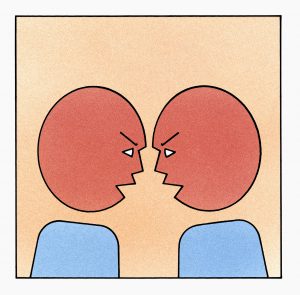

In one of my roles as a director of Undergraduate Studies at University of Illinois at Urbana-Champaign (UIUC), I work closely with our advisor, I speak directly with potential students and their parents, and I am on our department’s curriculum committee.
On the one hand, I am passionate about Spanish and how it can help students understand our world differently, and better. Studying Spanish, studying in Barcelona for a year, and doing a PhD in Spanish literature back in the 80s and 90s afforded me many wonderful experiences and gave me tools. On the other hand, I see some very important tensions that make me wonder about the long-term growth of Spanish as a serious, engaged, intellectual program on U.S. college campuses.
Spain-centric programs
Spain has a central role in both the typical curriculum and in students’ imagination of “Spanish,” yet Spain is only a small piece of the Spanish-speaking world and of Spanish-language cultural production.
Spanish as a tool
Many students want to study the Spanish language to add it their their resumes, whereas faculty and courses are aimed at the discipline of “Hispanic Studies,” not (or not just) learning Spanish.
Heritage speakers
With a few notable exceptions, Spanish programs are structured to teach Spanish as a foreign language, even though the number of heritage speakers in the U.S. will continue to grow—and second-language learners need to learn about and with the Spanish speakers of this country.
These issues have been clear to me for a while now, but recently, I saw them play out before my eyes in three different occasions in a single week.
Social Media Posts
Students in my Business Spanish course are learning about bilingual social media marketing and creating posts for the Spanish-Advising UIUC Facebook page. During the first week, almost all the posts were about Spain, except for the posts prepared by heritage learners that featured information about Latin America and U.S. Latinos.
They were given free reign. They could post about anything. My only directive was that they post something that they believed would be of interest to our Illinois students of Spanish. And that was Spain.
Their posts were good and their intentions were good. You could see as they were working together to create the posts that they were passionate and interested in the topic and eager to share their interest in Spanish. But the idea of “Spain”—as a study abroad destination, as a place to visit, and its history—predominated.
Documentary Screening and Student Panel
I attended a screening of Dying to Get In!, a documentary on immigration, a couple of days later. (By the way, it is a very good documentary that you can watch here.) After the film, there was a panel of three Latino student activists speaking about the documentary. They spoke about why they are activists and how other students can get involved.
I raised my hand and said, “I’m from the Spanish department, and we teach students how to speak Spanish, but how can we get them to be interested in Spanish speakers? (We know from reports on campus microaggressions that many students demean Spanish-speakers.)
Interestingly, the students mentioned my “Spanish in the Community” course (they did not know me or know that it was my course) as one way to do that. They said that not many students know about the course, and one student said she was a Spanish minor and she didn’t take the course herself, though she wanted to, because she was trying to just finish up her requirements. Then a Latina/o Studies grad student said that she had met many LLS students who were minoring in Spanish—and she was surprised by that—who want to learn more about their cultures in our classes. She suggested that our departments collaborate more.
So our Spanish program is not seen as integrated with Latino/a Studies, the courses that interest our heritage learners aren’t required, and the issues and activism related to Spanish and Spanish-speakers in the U.S. do not feature prominently on required courses.
Major/Minor
The Division of General Studies hosts a Majors/Minors Fair each year, and our advisor, a current student and I attended last week. In less than two hours, we spoke to over 50 students who visited our table. All were interested in the Spanish minor. None were interested in the major. Our minor consists of six courses. Students who scored a four or five on the AP test receive credit for two of those courses, leaving them with only four courses to complete the minor. Very do-able! The students who had taken the AP test were almost all white. They were already two courses ahead in our curriculum.
Of the heritage speakers who came to the table, almost none of them had taken the AP test. So they have to go through the entire curriculum, despite the fact that they probably have as much or more knowledge of “Spanish” as the second-language learners who took the AP test.
That makes me pretty uncomfortable. White students, it seems from my non-scientific assessment, are more likely to take the AP test in high school which is probably geared mostly toward second language learners anyway. Then they come to college and the second language learners have another leg up on the heritage speakers because they automatically have credit for two required Spanish courses.
Finally, I encouraged students to consider studying abroad to complete the minor, and almost all—including the heritage learners—were interested in going to Spain.
There are solutions to these problems but the solutions aren’t palatable to the people who need to implement them. But if we don’t change our Spanish programs, eventually, we will be changed.
Ann Abbott is an award-winning Spanish language educator who uses service learning so that her students actually experience the language, cultures, and the course content. She regularly teaches Spanish in the Community, Business Spanish, and Spanish & Entrepreneurship. Very active on social media herself, she also teaches social media marketing to her students and presents to other language educators about teaching with technology. In fact, when she walks into her classroom, she usually says, “Students, turn on your cellphones,” and then proceeds to access the target language and cultures through students’ own devices. She is associate professor, Department of Spanish, Italian & Portuguese Director of Undergraduate Studies, Spanish University of Illinois, Urbana-Champaign.







